How Multiples Charts Help More Than Multiplication Tables
share this timesaver:
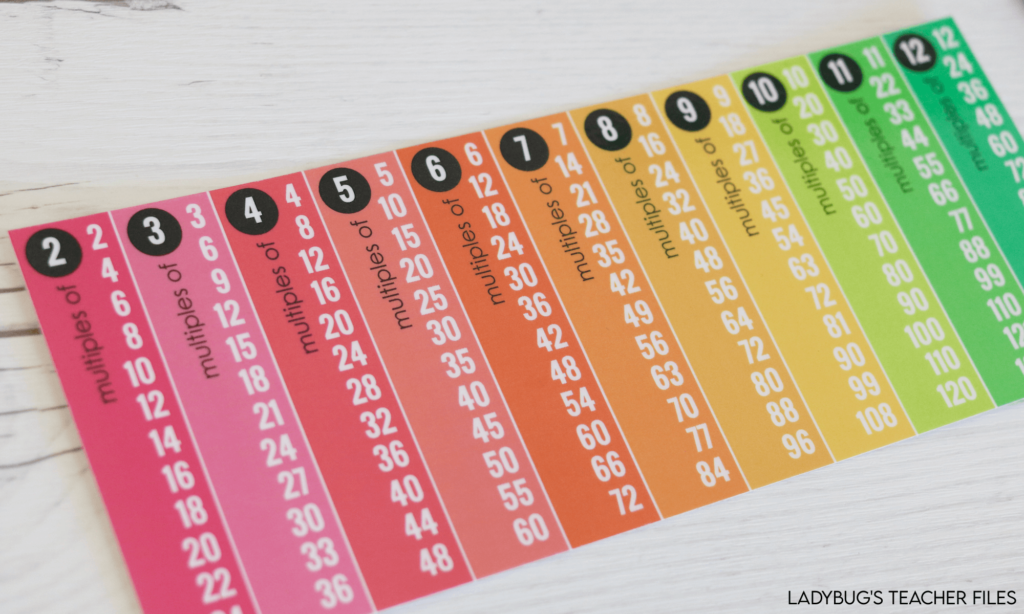
For most of my teaching career, I used multiplication tables for my students…I never gave much thought to multiples charts. I ALWAYS thought multiplication tables were such a great tool for those who hadn’t mastered their facts yet. I made so many colorful variations for my students, thinking I was helping them!
But as I watched my students use the tables, I realized they weren’t really gaining any fact fluency. They were just constantly lining up those factors to find the product and moving on to the next problem.
I wanted a tool that could support my learners, while strengthening their fact fluency.
So I turned to multiples charts instead…and I haven’t looked back!
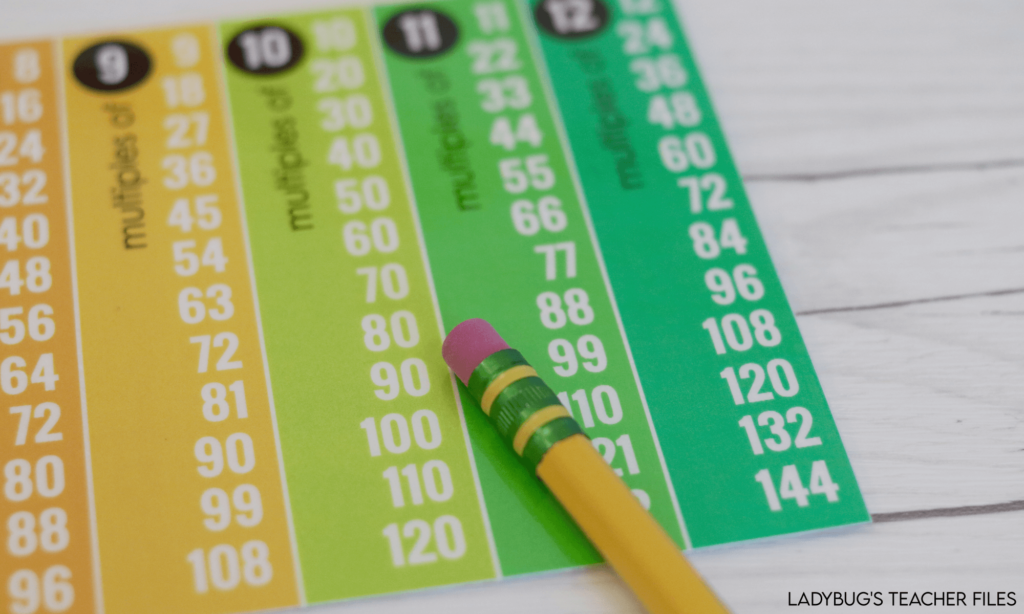
Why multiples charts?
Multiples charts provide the same reference material as a multiplication table, in a more concise format. I truly feel these charts are less overwhelming for all learners.
And there are so many benefits.
Multiples charts are…
Easier to Navigate:
Students only need to follow a vertical path (rather than lining up rows and columns) making it much faster for them to find those products.
Helpful for Fluency:
The repetitive use of the charts helps students see the patterns and begin to memorize sequences, while strengthening their fact fluency.
Simpler to Store:
The smaller size of a multiples chart is much easier to store in workbooks, toolkits, or desks…rather than a full-sheet multiplication table.
Multiples charts also provide a scaffold for students who haven’t attained total fluency, yet are tackling more difficult math concepts…especially in grades 4 and 5!
We have used multiples charts to support students in larger, multi-digit multiplication…
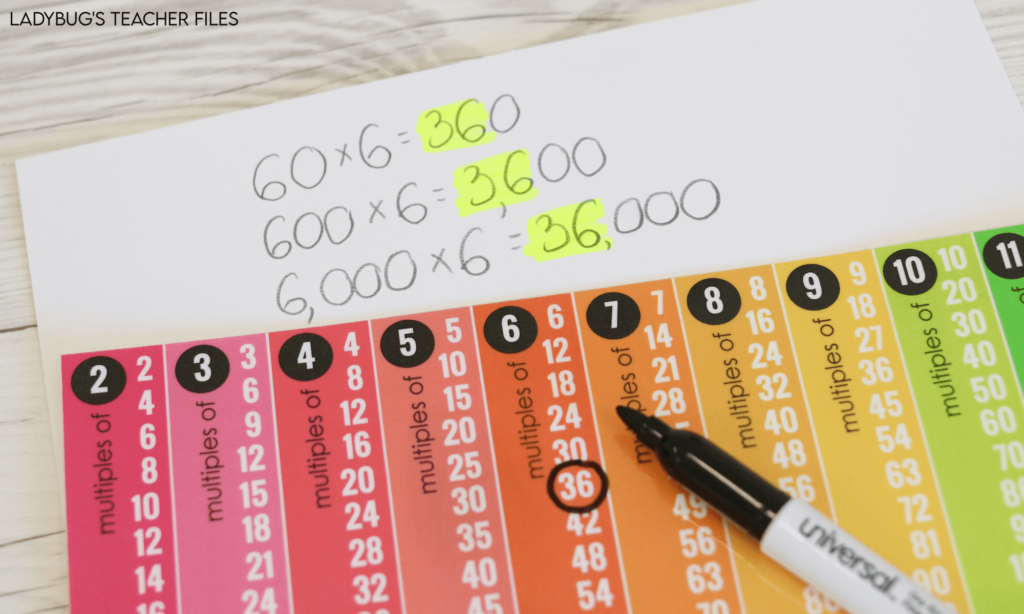
As well as our work with fractions in all operations. They are particularly helpful in finding those common denominators!

Above all, my students LOVE the multiples charts. The bright colors and easy-to-navigate layout have made them our go-to reference for years now. And anything that an upper-elementary student endorses is good in my book, ha!
The charts have been such a hit for my math groups that I started making more for our school…and I ended up making one for every student in grades 3-5!
creating the charts quickly
After making a zillion of these for our school (ha!) I’ve found a few steps that make it easy to create them quickly, while ensuring they are long-lasting.
Print on Cardstock
This will prevent the charts from getting folded or crushed…mine have lasted for years thanks to this.
Cut with a Trimmer
Not only will a paper trimmer save you tons of time…and it will also save your hand from cutting with scissors!
Laminate
With a laminated surface, your students will be able to write on the charts with dry erase markers…plus they’ll last longer.
(I’m actually pretty anti-laminating these days because of the plastic waste. However, it does create a nice dry erase surface and my students use their markers to identify patterns and circle products)
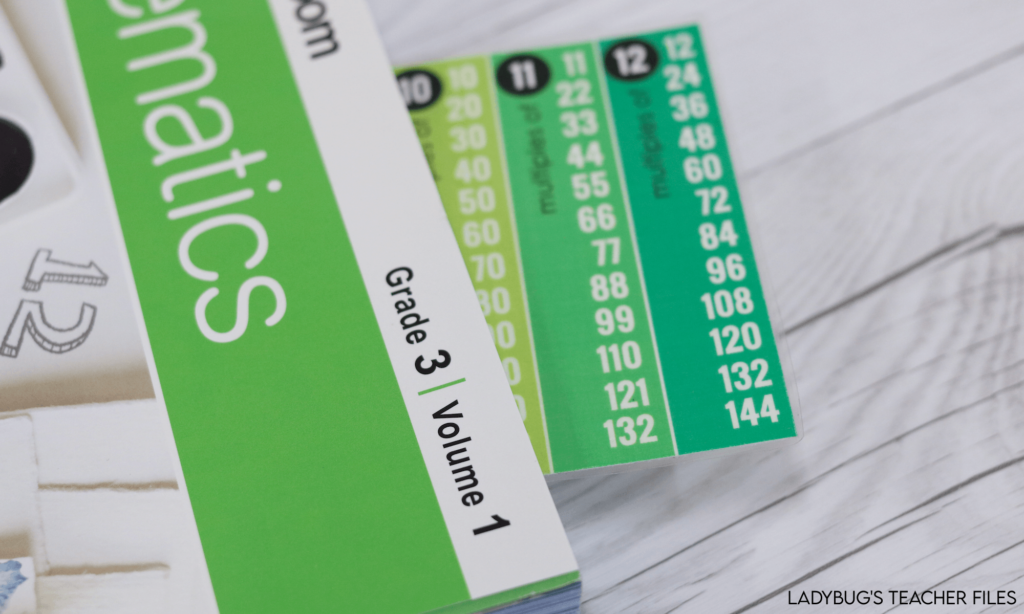
storing the charts
The smaller size of the multiples charts makes it easy to store them in a variety of ways. For my math intervention students, I just keep the charts in a clear container so they are ready to grab each day.
I’ve also seen some great ways to store them in the classrooms around our school:
In Math Toolkits
The multiples charts fit in nicely along with manipulatives your students use each day.
As a Bookmark
Have that multiples chart always ready and never lose a workbook page again.
On Student Desks
These multiple charts can also be taped to tables/desks, for easy reference.

ready to try multiples charts?
Would you like to try multiples charts with your students instead? I have these bright charts available right on site:
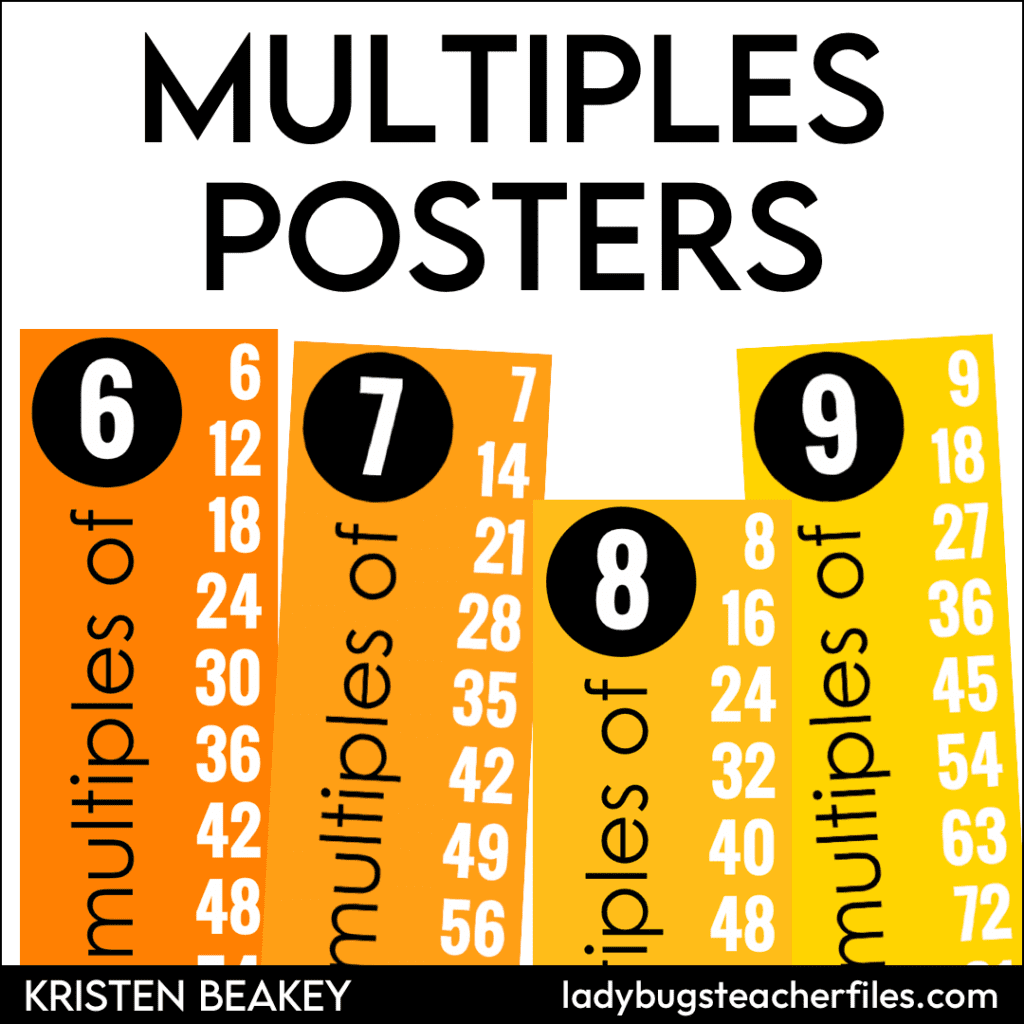
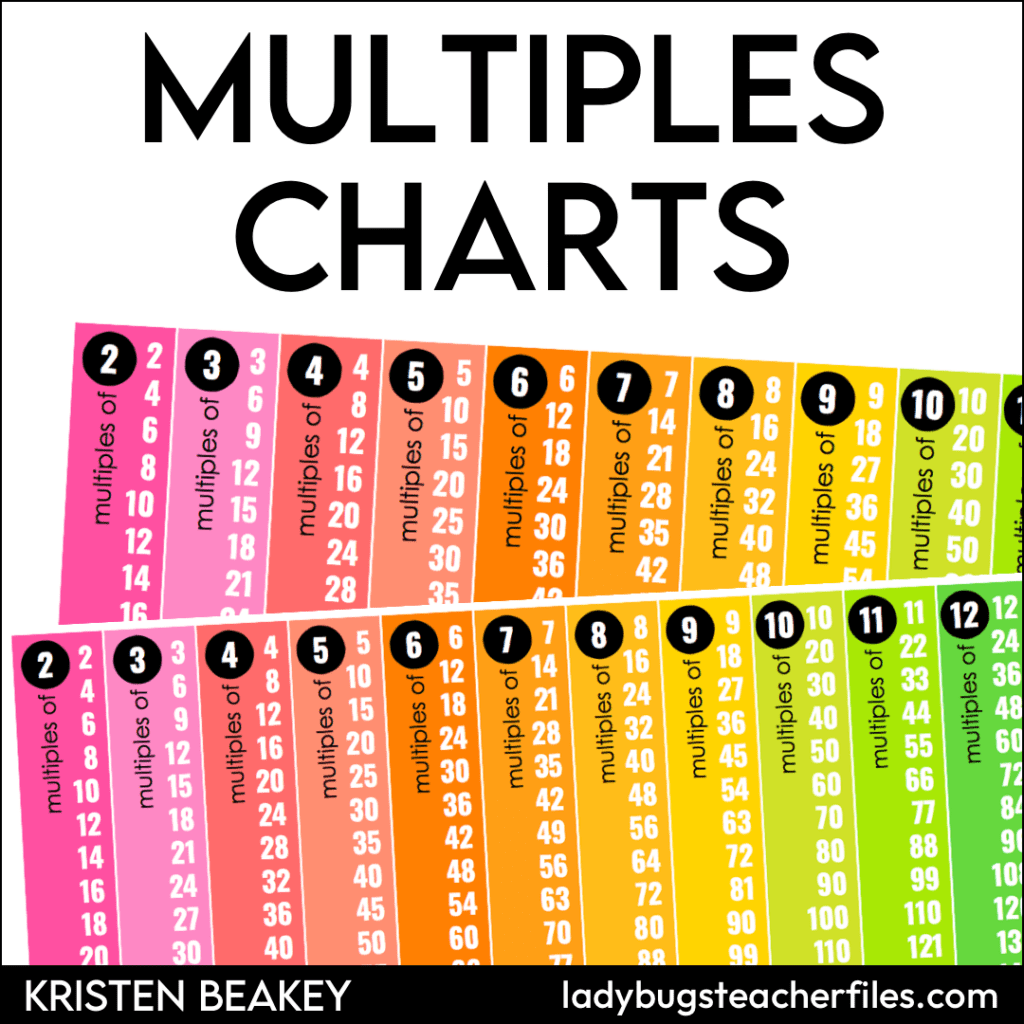
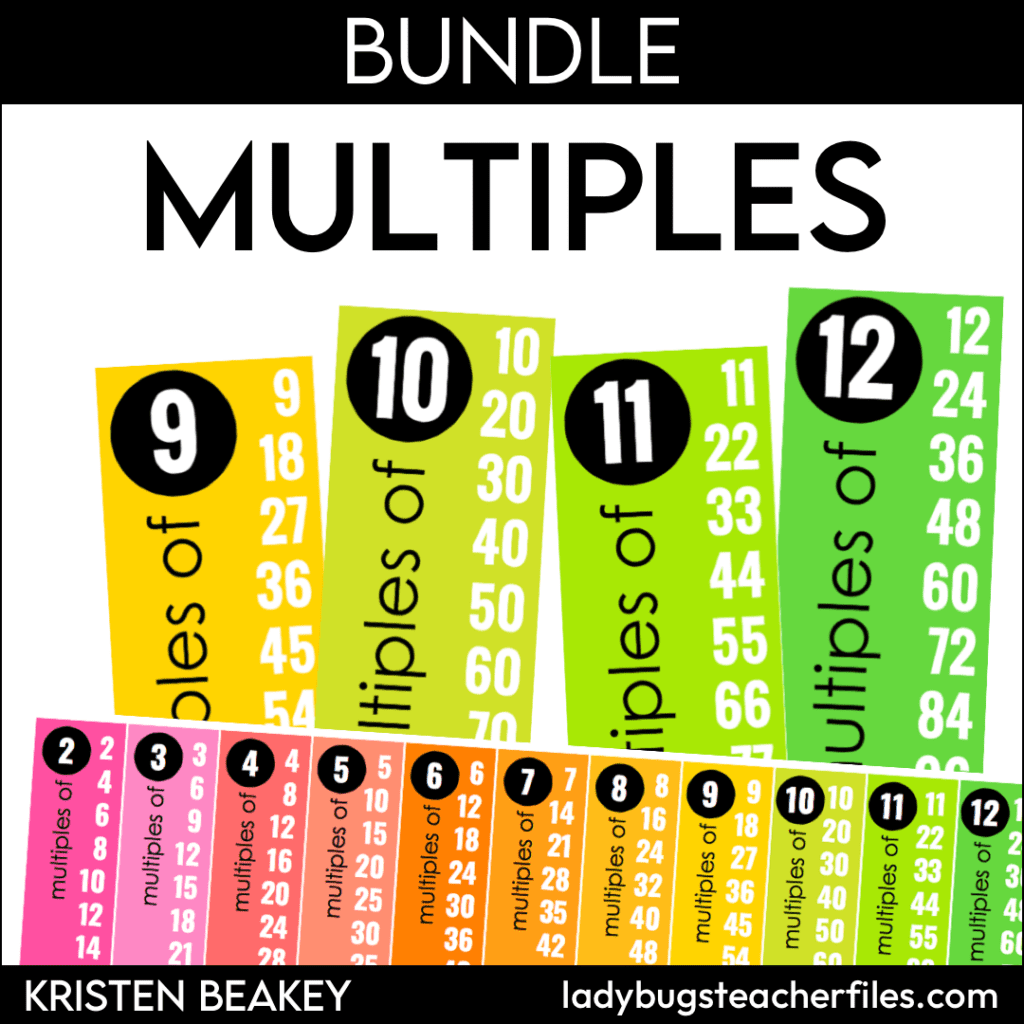
WHAT DO YOU THINK?
What are your thoughts on multiples charts versus multiplication tables? Please share below!
Kristen Beakey
I’m an elementary math coach with a passion for sharing beautiful, streamlined solutions to save teachers time. Ladybug’s Teacher Files has been a work of love since 2010. Filled with tech tutorials, math ideas, and organization…I strive to save you time in all aspects of your teaching!









Multiplication charts have always been my go to as well. I love that this chart is similar to taking the training wheels off! The support is still there, but they have to think more of working with multiples and pattern fluency! I will definitely be incorporating these! Thank you so much!
Hi Eran! I love your analogy…so true! Thanks for taking the time to read this…I’m so glad it could help!!